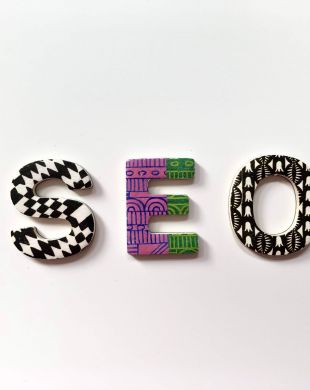Branding 101: A Stressful But Necessary Process Made Simple
12th July 2021 |

Have you ever bought a pair of shoes that you wore down to practically nothing because they fit so well? At that stage, if you didn’t have the foresight to buy two pairs, it’s likely you would shop the same brand again to replace them. You’re thinking of that pair of shoes right now, aren’t you?
Everyone has a degree of brand loyalty embedded within them because when you find something you love, it’s hard to let it go and it’s even harder to forget it.
For a small business, getting the client to buy your product in the first place is no easy task as competing against big brands with devoted customers and unlimited marketing budgets is an uphill battle. However, with the right brand strategy, it can be done.
What is branding?
Branding goes beyond the scope of a cool logo or a fancy advertisement in Times Square. You need to start by defining what you want your customer’s overall perception of your business to be because, after all, that’s what defines your reputation. That’s why having a consistent message, voice, and customer experience is so powerful — you want to deliver quality that fulfills your customer expectations.
If you have a physical store, that environment should reflect your message, just as your printed materials and most importantly, your online presence should. That’s why going through the oftentimes grueling process of defining your brand is so important. It will keep you on task to maintaining a strong, relatable identity. In broad terms, you should start by defining these three key elements: Brand Strategy, Brand Identity, and Brand Marketing.
Brand Strategy: How do you want the world to see your business?
To establish an effective brand strategy, you should look at the competition, hone in on your target audience, your brand’s voice, and the message and story you want to associate with your business. Then ask yourself these rather existential questions: Why do you exist? What problem do you solve? What makes you different and why should people care? The answers to these questions can help you develop a mission statement, taglines, a value proposition, and more.
In terms of looking at the competition, imitation is indeed the best form of flattery, but not necessarily in business. Understanding what they do well and where they have room for improvement is a key factor in filling those gaps and creating your own identity having learned from them. Take the time to research how they got where they are and you could begin to create a roadmap all your own based on where you feel most comfortable in terms of marketing strategy, customer service, adjustments in brand identity, and more.
Next, you’ll need to define your target audience. Remember, you will never be everything to everyone, and that's absolutely okay. Figuring out even the most minute details and behaviors of your customer will help you identify your place in their lifestyle. For example, marketing to all pet owners is too broad, but focusing on cat ladies over the age of 40 who live in small apartments alone is a great place to start when defining your niche market. Going further and defining their goals, aspirations, brand affinities, influencers, and even their fears is an effective next step. Targeting your customer so completely can be daunting, especially because it feels like you are limiting yourself, but it can give you a competitive advantage in ensuring your message reaches the right ears.
Using leadership expert Simon Sinek’s Golden Circle concept to identify your unique brand purpose is a good next step to take. It asks, quite simply: What?, How?, and Why? This is intended to get you focused on what product/service you offer, how you are different, and why your brand exists. See Sinek explain this methodology in more detail here: https://www.youtube.com/embed/fMOlfsR7SMQ
This exercise coupled with the previous steps will help you develop your mission statement. It’s the statement that drives your brand as it is a clear expression of what your business is most passionate about and where you’d like to be in a decade’s time. It’s basically your raison d’être, or in simpler terms, your Why.
This mission statement will help you further define your brand voice. What would your brand sound like if it were a person? How would it speak? Would it be funny? Serious? Assertive? Friendly? Informative? Deciding the kind of voice that your target customer would like to listen to is key here, so if we’re going with the cat lady example, she’d likely want to speak to someone who speaks intelligently, alternates between loving and hating the limelight, likes cringe-worthy puns, and has a penchant for knocking things off tables. Just a guess.
Brand Identity: How will your business become recognizable?
This area focuses on the visuals and voice of your brand: the logo, colors and fonts, icons, advertising, packaging, and web design and content built to tie it all together in a neat and understandable way.
Maintaining a consistent voice (see above) will help your brand image become recognized on multiple channels in the same way. This is a chance for you to let your brand’s personality shine through tailoring to the needs of your customer and interacting them on a more personal level. This can be done in a variety of ways: sharing behind-the-scenes content, using quirky product descriptions, or creating a tailor-made ad campaign in a manner that sets you apart. The most famous Super Bowl commercials are a great place to look for this level of quirk, if you are unsure of where to begin.
Only after you have made the above tough decisions should you even begin to work on a logo and color palette. This is often, erroniously, where a lot of companies begin without having done the necessary background work.This logo will be your calling card, so it must appeal to your customer and that’s where getting professional help can be a god-send. Spending a few euros here is a wise decision as you’ll likely end up with something timeless and top-notch.
This logo will help you decide how to go to print and web with the right arsenal of icons, font packs, and web themes, allowing you to branch out from the visuals to the actual content in a more assured and consistent way. For example, if you have a very modern, simple logo, it’s more likely you’ll want more white space and simple san serif fonts on your site for your content and product descriptions text, whereas, on the other hand, if you have a more old-timey logo, you’ll likely have a lot more room to play with older serifed fonts and less white space on your site.
Remember, your online presence is your most important tool for brand marketing, so as you design your website, don’t forget to incorporate your voice, mission, and personality quirks into the content as well as the visuals and layout. Go back to your competition and gain some ideas about how they are using their website to the fullest potential and where there is room for improvement. Also, look outside your own industry at sites you think your customer would like, and that can also help drive your decision-making when the going gets tough. Because it’s likely that it will if you don’t have help!
Brand Marketing: How will you bring awareness to your products/services?
You can connect with the right audience through strategic communication using your brand image through the user experience on your website, social media, SEO and content marketing, newsletters, and paid advertising campaigns.
Building the website is the first step, now you’ll need people to visit it. <<LINK HERE TO NOW WHAT ARTICLE>> Here are some of our tips for how to gain a following as you grow your site.
Unfortunately this is not a Field of Dreams scenario that “If you build it they will come.” To put it bluntly, you’ll need to get out there and be your own best advocate, and invite your employees to do the same. Start by inviting influencers to pop by the site and share it, go after news and media coverage, send out press releases, snag interview segments in industry press outlets and podcasts. Use your personal contacts to help you get the word out. Join business networks in your area to present your business and get key introductions to like-minded individuals who can help you push your business forward.
Finally, building a striking (and brand-accurate) profile page for various social media networks in your chosen voice is a must. Not all platforms will be right for your business as not all platforms are right for your customer, so step back and analyze where your voice will be best heard. Is your customer on LinkedIn? Facebook? TikTok? Instagram?
Video content is also increasingly more important, as there are more and more platforms built to harness the power of live motion. Think about online venues like YouTube, Facebook Video or Live, Snapchat, and Instagram Stories and decipher how you can use your brand voice to snag customers or at least get them to understand that you exist.
Overall, remember that being consistent is key. Build your identity and stick to it. Change is confusing. And so are cat ladies — at first glance.




